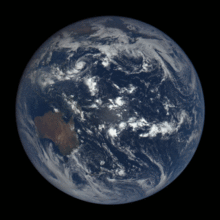
Back Periodo de rotación AN فترة التناوب Arabic Periodu de rotación AST Fırlanma periodu Azerbaijani Перыяд вярчэння Byelorussian Период на въртене Bulgarian Període de rotació Catalan Rotationsperiode German Rotacia periodo Esperanto Período de rotación Spanish

In astronomy, the rotation period or spin period[1] of a celestial object (e.g., star, planet, moon, asteroid) has two definitions. The first one corresponds to the sidereal rotation period (or sidereal day), i.e., the time that the object takes to complete a full rotation around its axis relative to the background stars (inertial space). The other type of commonly used "rotation period" is the object's synodic rotation period (or solar day), which may differ, by a fraction of a rotation or more than one rotation, to accommodate the portion of the object's orbital period around a star or another body during one day.